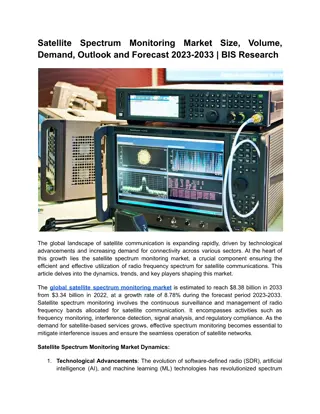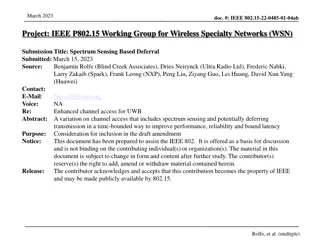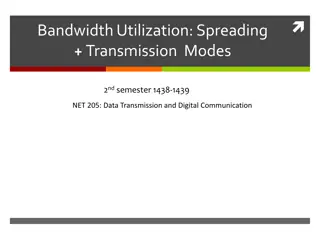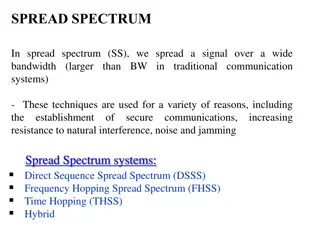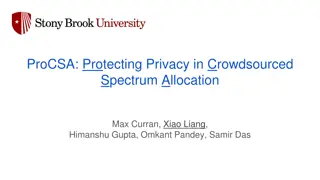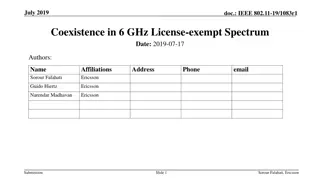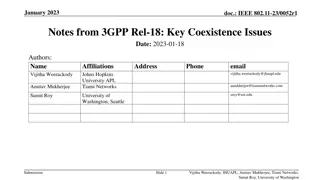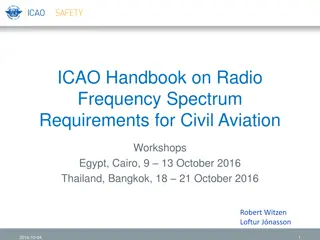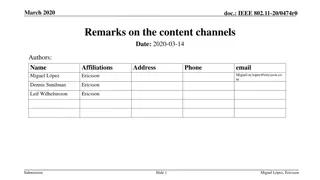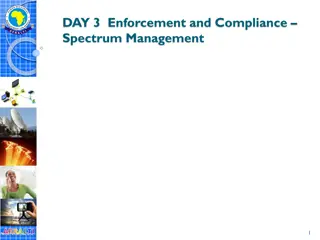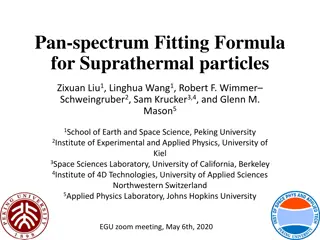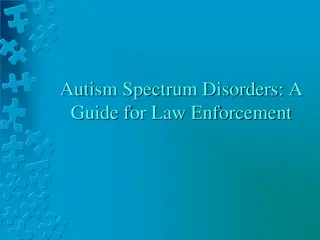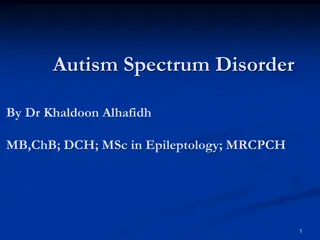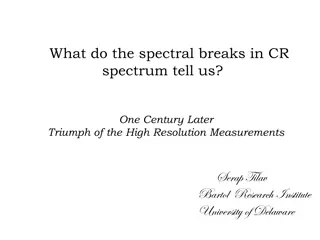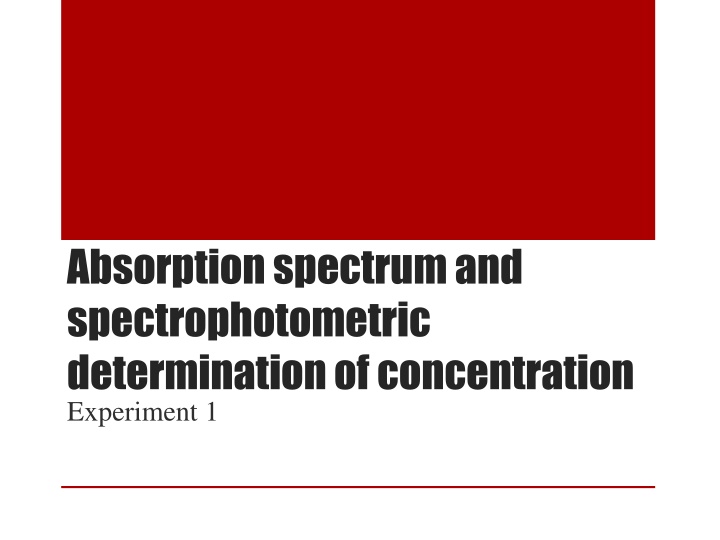
Absorption Spectrum and Spectrophotometric Concentration Determination
This experiment delves into the concept of absorption spectrum and spectrophotometric determination of concentration. Absorption spectrum serves as a unique fingerprint for molecules, aiding in identification and contamination detection. The Beer-Lambert law establishes a linear relationship between absorbance and concentration, enabling the use of standard curves to determine unknown sample concentrations. Various techniques and considerations are discussed to ensure accurate concentration determination in spectrophotometric analyses.
Download Presentation

Please find below an Image/Link to download the presentation.
The content on the website is provided AS IS for your information and personal use only. It may not be sold, licensed, or shared on other websites without obtaining consent from the author. If you encounter any issues during the download, it is possible that the publisher has removed the file from their server.
You are allowed to download the files provided on this website for personal or commercial use, subject to the condition that they are used lawfully. All files are the property of their respective owners.
The content on the website is provided AS IS for your information and personal use only. It may not be sold, licensed, or shared on other websites without obtaining consent from the author.
E N D
Presentation Transcript
Absorption spectrum and spectrophotometric determination of concentration Experiment 1
In this lab, three things that will be discussed Absorption spectrum How to find the concentration of unknown sample Extinction coefficient calculation ( )
1-Absorption Spectrum The curve that display the action or behaviour of absorption of molecule at different weave lengths. Every molecule has its own Absorption spectrum, So it s act as fingerprint for each molecule. be shown as a plot of the light absorbed by that compound against wavelength
Uses: 1. Identification of unknown molecules 2. max (it is the weave length at which the molecule has the maximum absorbance) 3. Contamination detection
2-Unknown Concentration of sample
The Beer-Lambert law shows linear relationship between absorbance and concentration. So, from this they use standard curve that shows a relationship between A and concentration depending on the Beer Lambert law Standard curve are most commonly used to determine the concentration of a substance, using serial dilution of solutions of known concentrations(standard solutions) is a solution containing a known concentration of an element or a substance. Once the standard curve is drawn, the concentration of an unknown sample may be determined by measuring the absorption of the sample at the same wavelength and pathlength.
Concentration of unknown sample What should you do if the absorbance of the unknown sample is higher than the highest absorbance of the standard solution? Standard curve are most commonly used to determine the concentration of a substance, using serial dilution of solutions of known concentrations(standard solutions)
There are two ways to find unknown concentration: By applying Beer-lambert law directly using Standard curve available information of any standard solution to determine the , then using these information to get the unknown concentration. Using:A = lc Note: will changed if when the weave length changed.
3-Molar extinction coefficient The molar extinction coefficient, , is a measurement of how strongly a chemical species absorbs light at a given wavelength. It is calculated from A = lc It is different for different substances and wave length.. Extinction coefficient has many units but they must relate to the units of concentration and length of light path. If the concentration if in molarity E is the molar extinction coefficient( ) (M-1 cm-1 )
Determination of Absorption Spectrum METHOD Detection the concentration of Standard curve
Take a test tube and add the following reagents: Reagent Volume (ml) 0.1 M citrate buffer, pH 2.4 9.0 7.5 x 10 - 5 M bromophenol blue 0.2 95% ethanol 0.8 1 1- -Absorption Absorption Spectrum: Spectrum:
Mix and measure the absorbance of the solution from 320 to 620 nm at 20 nm intervals, using a scanning spectrophotometer, against a water blank. Remember to zero the instrument at each wavelength setting. -Plot a graph of absorbance against wavelength (absorption spectrum curve), From the graph or spectrum determine max for bromophenol blue at pH 2.4 - maxfor bromophenol blue at pH 2.4 = . nm. 1 1- -Absorption Spectrum: Absorption Spectrum:
Tube No. 7.5x10 - 5M 95% ethanol (ml) 0.1 M citrate buffer [pH 2.4] (ml) Unknown sample (ml) bromophenol blue (ml) [std.] 1 2 3 4 5 6 7 0.1 0.2 0.4 0.6 0.8 1.0 - 0 . 9 0.8 0.6 0.4 0.2 - - 9 . 0 9 . 0 9 . 0 9 . 0 9 . 0 9 . 0 9 . 0 - - - - - - 1.0 [unknown] 2. Standard curve a) Set up 8 test tubes as follows: b) Mix and measure the absorbance of all the tubes at . nm against a water blank. Results: a-Record the absorbance in the table below: b-Plot a standard curve of absorbance against Molar concentration of bromophenol blue x10 6. c-From the curve determine the molar concentration of the unknown sample (tube 8). 2. Standard curve
Tube No. Molar concentration of bromophenol blue Absorbance at 430 nm 1 2 3 4 5 6 7[unknown] ................... Result

